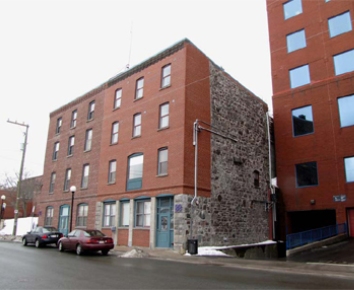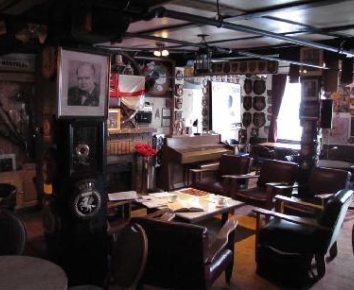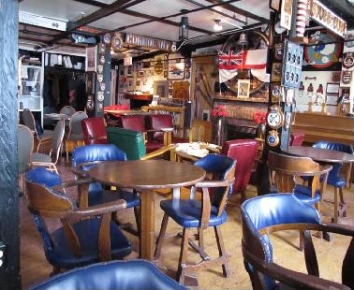Crow's Nest Officers' Club National Historic Site
The Crow’s Nest Officers’ Club was designated as a national historic site in 2011.
Commemorative plaque: no plaque installedFootnote 1
Crow’s Nest Officers’ Club
Founded during the Second World War by Captain E. R. Mainguy, RCN, Captain (Destroyers) of the Newfoundland Escort Force, this private social club brought together Allied naval officers and their Merchant Navy counterparts in order to bolster their effectiveness on the high seas. Here, officers gathered in the spirit of camaraderie to relax and share stories. The Club’s rich collection of military artifacts is a testament to naval traditions and preserves the memory of the officers and sailors who bravely escorted ships across the North Atlantic during the long fierce battle between German U-boats and Allied convoys.
Historic Sites and Monuments Board of Canada
English plaque inscription
Description of historic place
Crow’s Nest Officers’ Club National Historic Site of Canada is located on the third and fourth floors of a late 19th century brick industrial building on Water Street near the harbour of St. John’s, Newfoundland. A staircase leads to the club’s third floor, containing a kitchen and dining room. The fourth floor, filled with furnishings, pictures and items relating to the Battle of the Atlantic, retains the character of a welcoming wartime gathering place for off-duty military personnel. Its tavern-like interior contains a bar, armchairs around a fireplace, and closely packed tables and chairs. Hanging from beams and ceiling and arranged on walls is a large military artefact collection, while a U-boat periscope rises through the ceiling. Official recognition refers to all interior club spaces and the associated artefact collection.
Heritage value
Crow’s Nest Officers’ Club was designated a National Historic Site of Canada in June 2010 because:
- it was established by the Canadian commander of the escort flotilla during the Second World War in order to create a more effective operational force through increased social interaction amongst the Allied naval officers and their counterparts in the Merchant Marine who were involved in the Battle of the Atlantic; and more specifically in the Newfoundland Escort Force;
- in the spirit of camaraderie, it brought together officers from all nations involved in this gruelling theatre of war to relax, share stories, and develop a familiarity, solidarity, and ease that would bolster their effectiveness on the high seas; and,
- through its major collection of military artefacts, many of which date from the Second World War, and the evocative atmosphere created by their jumbled placement on virtually every vertical surface of the club, the Crow’s Nest reflects a rich body of naval tradition, preserves the memory of the officers and sailors who bravely escorted ships across the North Atlantic, and serves as a testament to them.
The heritage value of the Crow’s Nest Club also lies in its nickname “Crow’s Nest; its function as a gathering place for thousands of military personnel from more than a dozen nations between 1942 and 1945; and its continued importance since May 1946 among Newfoundland navy, army and air force officers, war veterans in general, and civilians as a place to socialize. The Club offers a rare glimpse into the social life of naval officers and sailors, who have imbued the place with an atmosphere of naval tradition. The Club’s well-preserved nature attests to its significance in Canada’s military and social history.
The National Program of Historical Commemoration relies on the participation of Canadians in the identification of places, events and persons of national historic significance. Any member of the public can nominate a topic for consideration by the Historic Sites and Monuments Board of Canada.
- Date modified :


